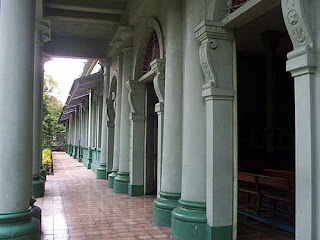


Barili also has many wonderful sceneres in where many foreigners visit there like Mantayupan falls, Sayaw beach, Boloc-boloc spring and a lot more. Candugay and Sayaw are Barili's most popular beaches. Tourists and locals constantly swarm these beaches for it white sand, clear blue waters, and inexpensive rates. The Mantayupan Falls is one of the tallest waterfalls found in Cebu Province. With 5 pesos, one can see the majestic falls and even bathe in its waters. It is located in the southern part of the municipality, in the humble barangay of Campangga. It is also being used to produce electricity in the locality and the source of irrigation in the nearby farms.Bolocboloc Springs is actually a place with two swimming pools containing fresh water. The place is simple with the two swimming pools surrounded by trees. The resort is located in Barangay Bolocboloc in where it is also the place in where I finished my high schoool.

Anyone who travels through the barrio of Gibuangan In the outskirts of Barili cannot but be impresses by the sight of old buildings off the road. This is the unique and now largely forgotten institution called Hospicio de San Jose.It traces its beginnings to November 27, 1925, when the Philippine Commission passed Public Act No. 3239 accepting the offer of Pedro Cui and his sister Benigna to establish a home for the care of the indigent, invalid and abandoned elders free of charge.Then on January 2, 1926, the Cuis executed a deed of donation, which formally endowed the Hospicio with income from the extensive Cui properties in Barili and Southern Cebu. Don Pedro and Doña Benigna were merchant-philanthropists who built their fortune from tobacco production in the 19th century.The Hospicio is the “first and only home for the aged in the Philippines that is totally funded by a private endowment.” Doña Benigna Cui was its first administrator.The impressive Hospicio complex consisted of dormitories, a chapel, an infirmary, an electric plant, and an administration building set on a one-hectare property. It had 11 inmates in 1929 and 88 in 1981.Today, it is beset by problems of management and diminished assets. However, it continues to function under the administration of the Cui family.
That are some of the untold stories of our place and i hope that everyone who visits our place will appreciate it.



choya ahh
ReplyDelete